Pope Alexander II, born Anselm of Baggio, was the head of the Roman Catholic Church and ruler of the Papal States from 1061 to his death in 1073. Born in Milan, Anselm was deeply involved in the Pataria reform movement. Elected according to the terms of his predecessor's bull, In nomine Domini, Anselm's was the first election by the cardinals without the participation of the people and minor clergy of Rome. He also authorized the Norman Conquest of England in 1066.
Pope Stephen IX was the Bishop of Rome and ruler of the Papal States from 3 August 1057 to his death on 29 March 1058. He was a member of the Ardenne-Verdun family, who ruled the Duchy of Lorraine, and started his ecclesiastical career as a canon in Liège. He was invited to Rome by Pope Leo IX, who made him chancellor in 1051 and one of three legates to Constantinople in 1054. The failure of their negotiations with Patriarch Michael I Cerularius of Constantinople and Archbishop Leo of Ohrid led to the permanent East–West Schism. He continued as chancellor to the next pope, Victor II, and was elected abbot of the Benedictine monastery of Montecassino.

Year 1054 (MLIV) was a common year starting on Saturday of the Julian calendar.
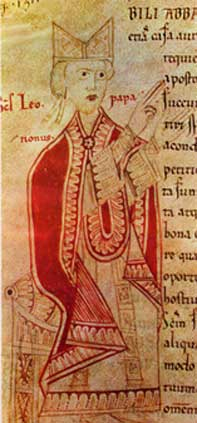
Pope Leo IX, born Bruno von Egisheim-Dagsburg, was the head of the Catholic Church and ruler of the Papal States from 12 February 1049 to his death in 1054. Leo IX is considered to be one of the most historically significant popes of the Middle Ages; he was instrumental in the precipitation of the Great Schism of 1054, considered the turning point in which the Catholic and Eastern Orthodox Churches formally separated.
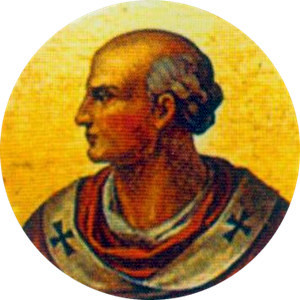
Benedict X, born Giovanni, was elected to succeed Pope Stephen IX on 5 April 1058, but was opposed by a rival faction that elected Nicholas II. He fled Rome on 24 January 1059 and is today generally regarded as an antipope.

Pope Nicholas II, otherwise known as Gerard of Burgundy, was the head of the Catholic Church and ruler of the Papal States from 24 January 1059 until his death in 27 July 1061. At the time of his election, he was bishop of Florence. During his Papacy, Nicholas II successfully expanded the influence of the papacy in Milan and southern Italy. He was also responsible for passing papal election reforms.

The Ecumenical Patriarchate of Constantinople is one of the fifteen to seventeen autocephalous churches that together compose the Eastern Orthodox Church. It is headed by the Ecumenical Patriarch of Constantinople.
The Patriarch of Antioch is a traditional title held by the bishop of Antioch. As the traditional "overseer" of the first gentile Christian community, the position has been of prime importance in Pauline Christianity from its earliest period. This diocese is one of the few for which the names of its bishops from the apostolic beginnings have been preserved. Today five churches use the title of patriarch of Antioch: one Eastern Orthodox ; one Oriental Orthodox ; and three Eastern Catholic.
The East–West Schism, also known as the Great Schism or the Schism of 1054, is the break of communion between the Catholic Church and the Eastern Orthodox Church since 1054. A series of ecclesiastical differences and theological disputes between the Greek East and Latin West preceded the formal split that occurred in 1054. Prominent among these were the procession of the Holy Spirit (Filioque), whether leavened or unleavened bread should be used in the Eucharist, iconoclasm, the coronation of Charlemagne as Emperor of the Romans in 800, the Pope's claim to universal jurisdiction, and the place of the See of Constantinople in relation to the pentarchy.

Gerard, also known as Gerard the Wonderful, was a Lotharingian nobleman. He was the count of Metz and Châtenois from 1047 to 1048, when his brother Duke Adalbert resigned them to him upon his becoming the Duke of Upper Lorraine. On Adalbert's death the next year, Gerard became duke, a position that he held until his death. In contemporary documents, he is called Gerard of Alsace, Gerard of Chatenoy, or Gerard of Flanders.
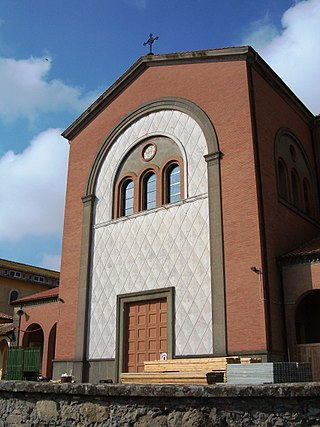
The Diocese of Porto–Santa Rufina is a Latin suburbicarian diocese of the Diocese of Rome and a diocese of the Catholic Church in Italy. It was formed from the union of two dioceses. The diocese of Santa Rufina was also formerly known as Silva Candida.
Leo of Ohrid was a leading 11th-century Byzantine churchman as Archbishop of Ohrid (1037–1056) and advocate of the Ecumenical Patriarchate of Constantinople's views in the theological disputes with the See of Rome, which culminated in the East–West Schism of 1054.
Reims, located in the north-east of modern France, hosted several councils or synods in the Roman Catholic Church. These councils did not universally represent the church and are not counted among the official ecumenical councils.
The East–West Schism that occurred in 1054 represents one of the most significant events in the history of Christianity. It includes various events and processes that led to the schism and also those events and processes that occurred as a result of the schism. Eastern and Western Christians had a history of differences and disagreements, some dating back to the period of Early Christianity. At the very root of what later became the Great Schism were several questions of pneumatology and ecclesiology. The most important theological difference occurred over various questions regarding the procession of the Holy Spirit, and the use of the filioque clause in the Nicene Creed. One of the main ecclesiological issues was the question of papal supremacy. Other points of difference were related to various liturgical, ritual, and disciplinary customs and practices. Some political and cultural processes also contributed to the breakout of the schism.
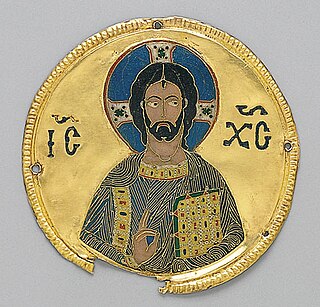
Christianity in the 11th century is marked primarily by the Great Schism of the Church, which formally divided the State church of the Roman Empire into Eastern (Greek) and Western (Latin) branches.

Michael I Cerularius or Keroularios was the patriarch of Constantinople from 1043 to 1059 AD. His disputes with Pope Leo IX over church practices in the 11th century played a role in the events that led to the Great Schism in 1054.
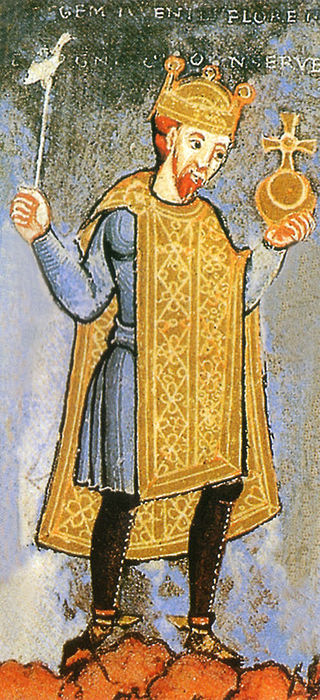
The history of the papacy from 1046 to 1216 was marked by conflict between popes and the Holy Roman Emperor, most prominently the Investiture Controversy, a dispute over who— pope or emperor— could appoint bishops within the Empire. Henry IV's Walk to Canossa in 1077 to meet Pope Gregory VII (1073–85), although not dispositive within the context of the larger dispute, has become legendary. Although the emperor renounced any right to lay investiture in the Concordat of Worms (1122), the issue would flare up again.

Peter Damian was an Italian reforming Benedictine monk and cardinal in the circle of Pope Leo IX. Dante placed him in one of the highest circles of Paradiso as a great predecessor of Francis of Assisi and he was declared a Doctor of the Church on 27 September 1828. His feast day is 21 February.










